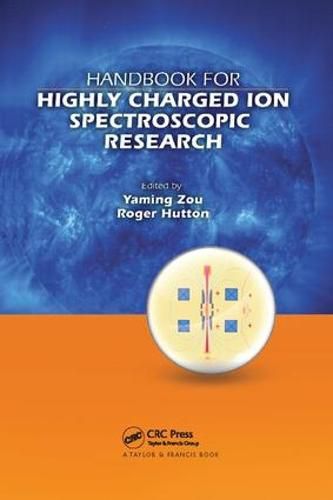Readings Newsletter
Become a Readings Member to make your shopping experience even easier.
Sign in or sign up for free!
You’re not far away from qualifying for FREE standard shipping within Australia
You’ve qualified for FREE standard shipping within Australia
The cart is loading…






The spectroscopy of highly charged ions plays a key role in numerous areas of physics, from quantum electrodynamics (QED) and parity nonconservation (PNC) testing to fusion and plasma physics to x-ray astronomy. Handbook for Highly Charged Ion Spectroscopic Research brings together many of the techniques and ideas needed to carry out state-of-the-art research in this field.
The first part of the book presents techniques of light/ion sources, spectrometers, and detectors. It also covers coincidence techniques and examines how atomic properties change along an isoelectronic sequence. The second part focuses on atomic structure and applications. In addition, it discusses theoretical ideas, such as QED and PNC, that are significant in precise spectroscopic studies of highly charged ions. Extensive references are included at the end of each chapter.
With the latest developments in fusion and x-ray astronomy research relying heavily on high-quality atomic data, the need for precise, up-to-date spectroscopic techniques is as vital now as it has ever been. This timely handbook explores how these spectroscopic methods for highly charged ions are used in various areas of physics.
$9.00 standard shipping within Australia
FREE standard shipping within Australia for orders over $100.00
Express & International shipping calculated at checkout
The spectroscopy of highly charged ions plays a key role in numerous areas of physics, from quantum electrodynamics (QED) and parity nonconservation (PNC) testing to fusion and plasma physics to x-ray astronomy. Handbook for Highly Charged Ion Spectroscopic Research brings together many of the techniques and ideas needed to carry out state-of-the-art research in this field.
The first part of the book presents techniques of light/ion sources, spectrometers, and detectors. It also covers coincidence techniques and examines how atomic properties change along an isoelectronic sequence. The second part focuses on atomic structure and applications. In addition, it discusses theoretical ideas, such as QED and PNC, that are significant in precise spectroscopic studies of highly charged ions. Extensive references are included at the end of each chapter.
With the latest developments in fusion and x-ray astronomy research relying heavily on high-quality atomic data, the need for precise, up-to-date spectroscopic techniques is as vital now as it has ever been. This timely handbook explores how these spectroscopic methods for highly charged ions are used in various areas of physics.